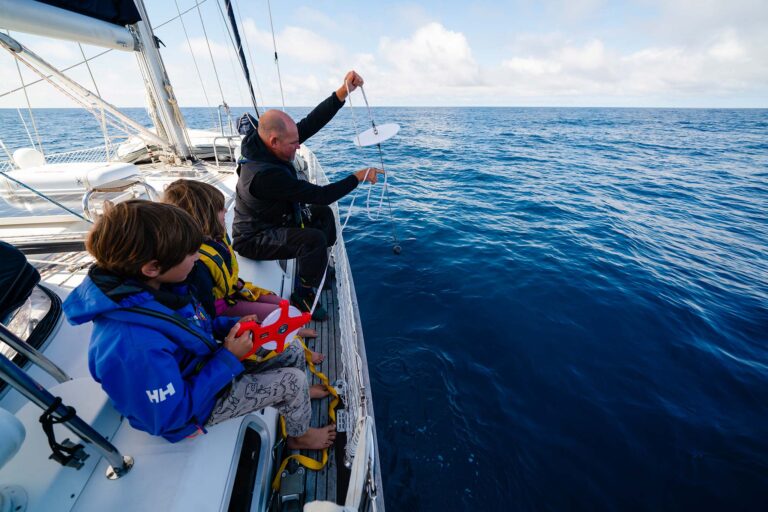February is National Black History Month, and to celebrate we’re highlighting some of the contributions of Black sailors at the height of the Age of Sail. For centuries here in the United States, sailing was one of the most equitable professions for Black Americans. It was a difficult, dangerous job, but one of the few in which a Black man could hope to advance and be compensated the same as a white man. Until the 20th century, roughly one in five sailors were Black. Among them were whalers, sailmakers, entrepreneurs and war heroes.

James Forten
James Forten’s career began early in life when he left school to join his father as a sailmaker. At just 14, he enlisted in the Revolutionary War effort, which afforded him his first chance to see the sails he’d spent years working on in action as a member of crew of the privateer Royal Lewis.
While at sea on his second voyage, Forten’s ship was captured by the British, who intended to traffic him into slavery in the West Indies. Instead, Forten impressed the British captain with his skill and intelligence and was offered the opportunity to travel to England to further his education. However, Forten was a staunch believer in the revolution and would not accept a favor that would indebt him to the British crown. He was held captive on a prison ship for seven months before being freed in a prisoner exchange and returned to Philadelphia. He was just 16-years-old.
Forten did eventually go to England to study sailmaking in the shipyards and lofts along the River Thames. From there, he returned to Philadelphia to apprentice at the loft where he and his father had worked years earlier. The loft’s owner, a white man named Robert Bridges, not only mentored Forten but refused to indulge those employees who didn’t want to work under a Black foreman. When Bridges was ready to retire, he loaned Forten the money to buy him out. Within three years, Forten paid off the loan and became the loft’s owner outright.
As a sailmaker, Forten never stopped improving the sail designs that came from his loft, including those used by the heavy frigates of the time. He also invented a new kind of sail hoist that made work easier and safer for sailmakers and sailors alike. The post-war trading boom created strong demand for his cutting-edge sails, and Forten quickly became not only a well-respected leader in his field, but one of the era’s wealthiest Americans.
Despite his personal success, race relations in Philadelphia seriously declined over the course of Forten’s lifetime. Slave patrols terrorized the city’s Black population, and in 1838, Black men lost the right to vote. Forten was threatened on multiple occasions, and his son was beaten.
Still, Forten pushed back. Over half of his $100,000 fortune (worth about $3 million today) went to purchasing the freedom of enslaved people and funding a newspaper and a school. He also opened up his home to refugees of slavery as a stop on the Underground Railroad and worked with local abolitionist leaders and women’s rights advocates. His wife and three daughters became prominent activists as well, creating the first integrated women’s abolitionist effort, the Philadelphia Female Anti-Slavery Society.

Absalom Boston
Like many young Black New Englanders in the early 19th century, Absalom Boston set out to make a name for himself aboard a whaling ship. The whaling industry was far from glamorous—the work was difficult and dangerous. But again, in contrast to most other jobs at the time, Black sailors could receive the same compensation as their white counterparts, and there was a real chance at promotion.
By the age of 20, Boston managed to save enough money to purchase a parcel of land on Nantucket and retired from the sea to open an inn. He never lost his knack for whaling, though, and 17 years later returned to sea as captain of The Industry, commanding the first all-Black crew aboard a U.S.-flagged whaler. Boston’s voyage yielded 70 barrels of oil and returned with the entire crew intact. He hadn’t lost a single sailor—an astounding feat given the industry’s perils.
Interestingly, Boston’s all-Black crew wasn’t his family’s first foray into breaking barriers in the whaling industry. Years earlier, Absalom’s uncle Prince had been sent to sea on a whaling voyage while enslaved. Upon his return, he refused to hand his wages over to his enslaver, ultimately taking the other man to court. Prince won and was not only allowed to keep his earnings but granted freedom, becoming the first African American to be emancipated via jury trial.
In keeping with Prince’s strength of character and legislative activism, upon returning from his final whaling voyage Boston became an advocate for Nantucket’s Black community, establishing an African Meeting House and Nantucket’s African Baptist Society. When the all-white high school refused to educate his daughter, he challenged the school and won. Nantucket went on to integrate its public schools in 1845, over a hundred years before Brown v. Board of Education. By the time Boston died in 1855, he was a respected community leader, wealthy landowner, and tireless advocate for better race relations between Nantucketers.
William Tillman
William Tillman was a Civil War hero originally from Milford, Delaware. During his teens, his family moved to Rhode Island, and soon after Tillman went to sea.
At 27, he was working as steward aboard the 300-ton schooner S.J. Waring when, three days into a passage from New York City to Buenos Aires, the ship was seized by privateers with a letter of marque from Confederate president Jefferson Davis.
The privateers took five of the Waring’s crew, including the captain and mates, aboard their ship, the Jeff Davis, and left a small prize crew on the Waring to tend to the remaining prisoners and steer their prize south. The privateers feigned civility, but secretly planned to traffic Tillman into slavery. Upon overhearing he’d be enslaved when they reached Charleston, South Carolina, Tillman told a trusted friend, William Stedding, “I am not going to Charleston a live man; they may take me there dead.”
Nine days after their capture, Tillman and Stedding succeeded in taking back the ship, killing three of the privateers, but sparing the rest. The struggle lasted just eight minutes. “It was a feeling of sorrow that I had been compelled to sacrifice human life,” Tillman remembered afterward. “Everything being as still as midnight on the sea could possibly make it, I felt a shuddering sensation, but as soon as I felt the cause which impelled me on to the deed, I felt relieved.”
Upon their return to New York, Tillman and Stedding were received as heroes. The New York Tribune said that the Union was indebted to Tillman for the “first vindication of its honor on the sea.” Social reform leaders like Frederick Douglass and Booker T. Washington also lauded Tillman’s bravery.
This article originally appeared in the January/February 2022 issue of SAIL.
Illustrations courtesy of Collection of George R. Rinhart, the Nantucket Historical Association, Wiki commons.
January 2022










